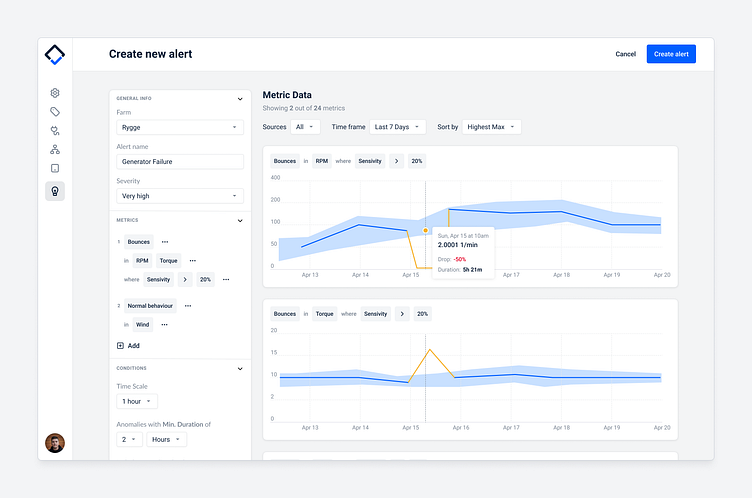Anomaly detection
Often the real challenge in anomaly detection is to construct the right data model to separate outliners from noise and normal data
Anomaly detection
Redesigning how humans & machines detect faults together
- Studying how the variable behaves over time, identifying if this behavior is affected or not by a trend or a seasonal component. Here the objective is to define the expected or “normal” behavior.
- Identifying and studying unusual behavior patterns and validating if they have to affect the normal pattern in some way.
Outliers and anomalies
Outliers should be considered normal although they can be very distant from systematic data pattern. Outliers and anomalies are treated in the same way; we identify an unusual behavior and then we decide whether it has to be considered an outlier or an anomaly.
Methods
From a very high level and in a very generic way, time series anomaly detection can be done by three main ways:
By Predictive Confidence Level Approach
One way of doing anomaly detection with time series data is by building a predictive model using the historical data to estimate and get a sense of the overall common trend, seasonal or cyclic pattern of the time series data.
Statistical Profiling Approach
Generating a statistical model or profile of the given data can be the fastest and the most useful approach, as this method can provide a more controlled and explainable outcome.
Clustering Based Unsupervised Approach
Unsupervised approaches are extremely useful for anomaly detection as it does not require any labelled data, mentioning that a particular data point is an anomaly.
Create alert
Instead of marking areas on the graph, engineers are able to make a set of rules and create an alert for that. It’s also possible to change the conditions of this alert and recipients. For example, some of the rules are more important to the different type of workers.
Alerts
Engineers are able to track everything and react immediently. It’s also possible to open more detailed view to see the details about the problem.





